We headed off to Abbeville, a tiny town off the beaten path. With Wendy and two of her children, we enjoyed a fabulous lunch at Indigenous Underground, a new hotspot recommended by local resident Brady who joined us for the day.
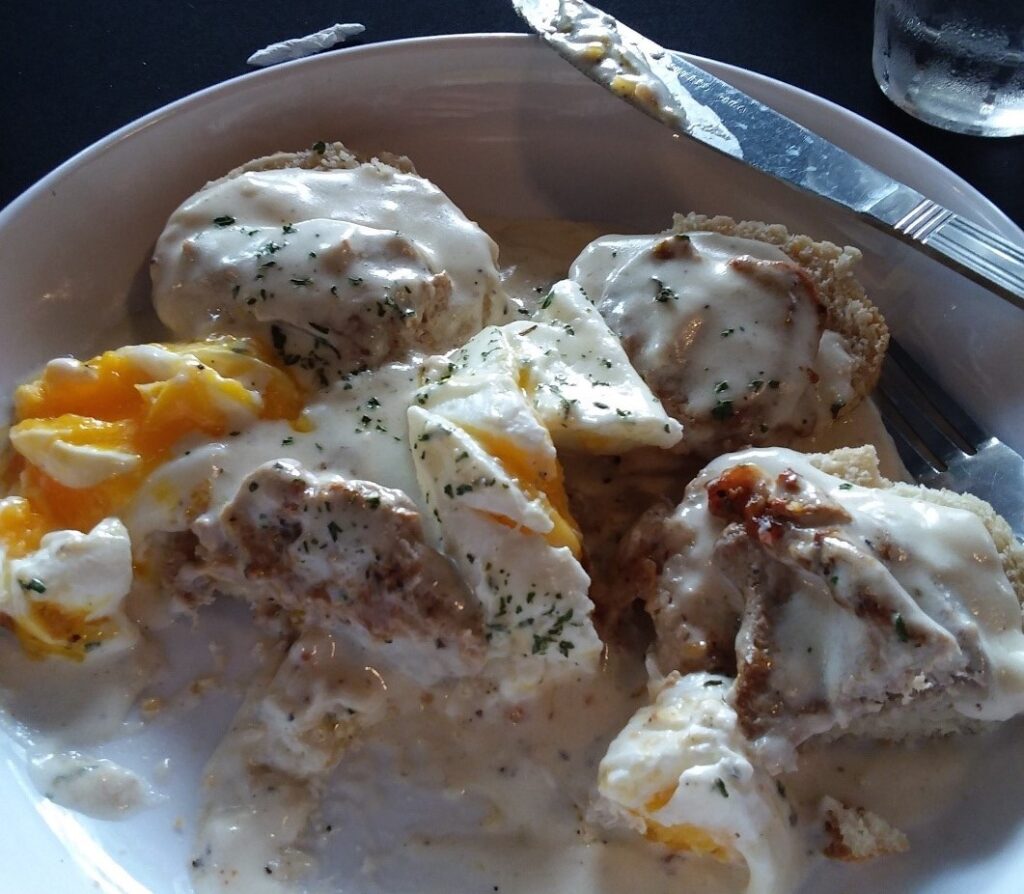
I ordered southern eggs Benedict: biscuits and pepper gravy with pork and eggs. Oh my gosh, was that delicious. So good, I recently took the time to pen a 5-star review.

The town square which was pretty much the whole town.
Nothing was open because it was Sunday. Too bad because there were some cute stores.

Many buildings dated from the 1860s. The Abbeville Vintage Market certainly looked intriguing.

The Belmont Inn, originally the Eureka Hotel (ca. 1890), is still operating and supposedly haunted!
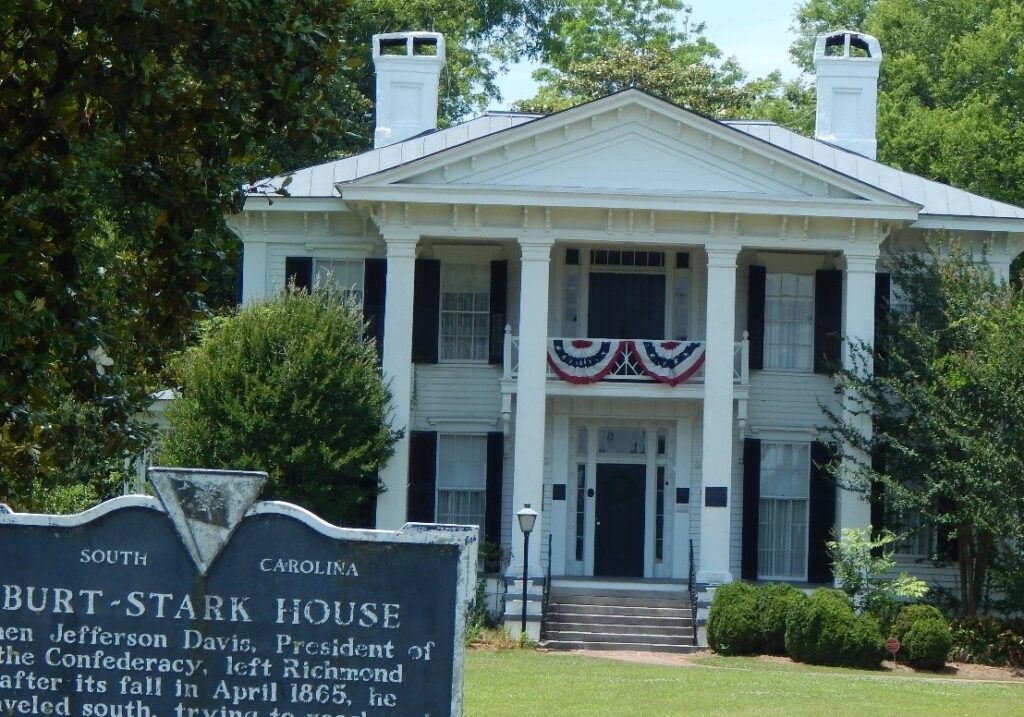
The sign reads, “When Jefferson Davis, President of the Confederacy, left Richmond after its fall in April 1865, he traveled south, trying to reach and rally the remnants of his army. On May 2, he spent the night at the home of Col. Armistead Burt. In 1971 Burt’s great-niece Mary Stark Davis gave this historic house and all its furnishings to Abbeville’s Historic Preservation Commission.”
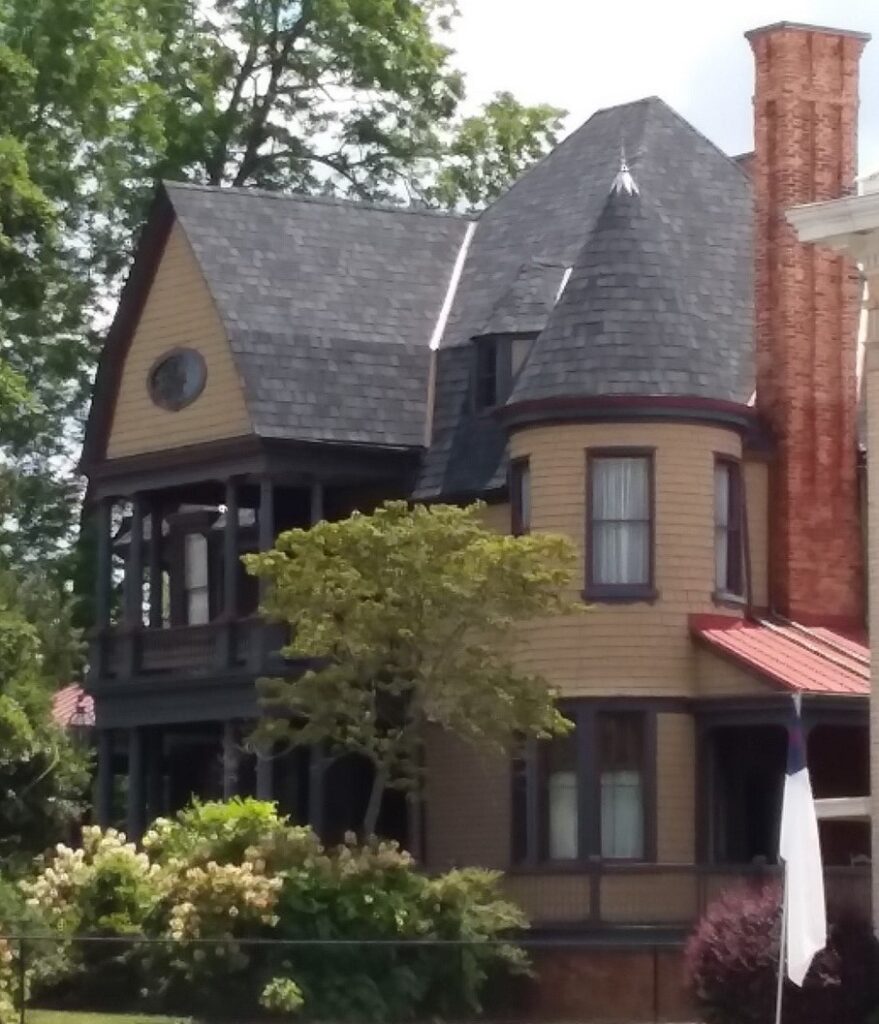
Glorious vintage house.
It was a half-hour drive to the Ninety Six National Historic Site. Not much remains from the days of the Revolutionary War battle, but the story was interesting and there are a few reproduction buildings.
Ninety Six was once a prosperous village with a population of about 100. Bad news. They were Loyalists. The British considered the town to be a strategic location where they built an earthen star-shaped fort in 1780. The following year, Major General Nathanael Greene led 1,000 patriots in a 28-day siege against the fort’s 550 defenders. Greene’s forces suffered severe losses and failed to take the town.

Ken, Victoria, James, Brady and Wendy on an overlook of the battle site.

The trenches are still visible. Sticks and branches were originally used to fortify trench walls.

In a single night, Patriots constructed a 30-foot rifle tower from which marksmen could shoot down into the fort (partial reconstruction above). Loyalists quickly used sandbags to make the walls of the earthen fort three feet higher and fired heated cannon balls at the tower in an attempt to burn it down. It didn’t catch fire, but the additional height on the fort proved impossible to overcome.
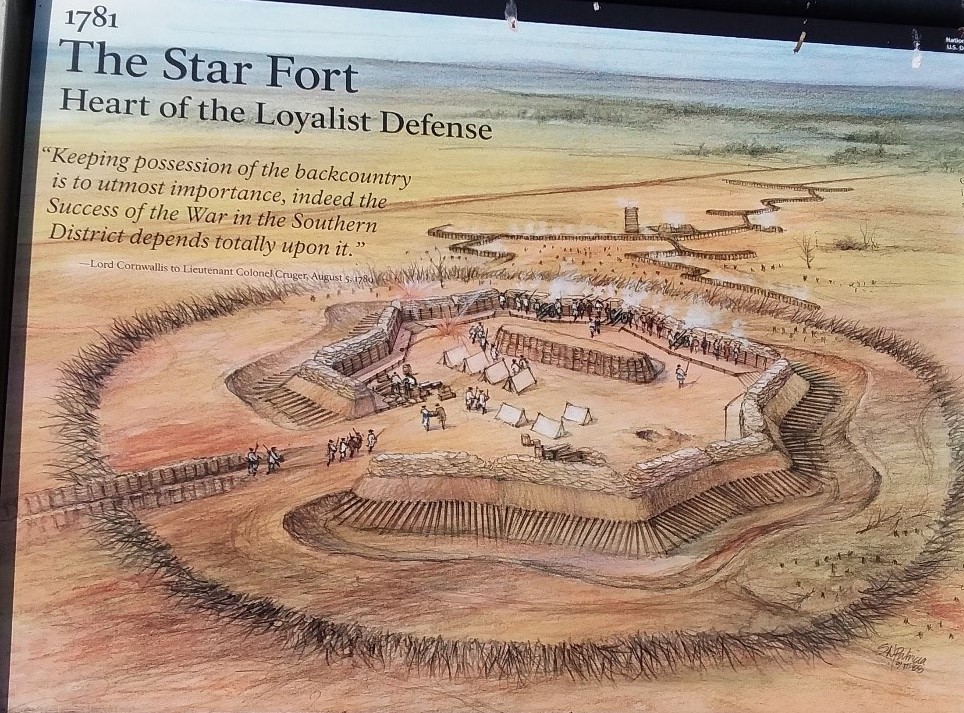
Graphic of the Star Fort, rifle tower and trenches.
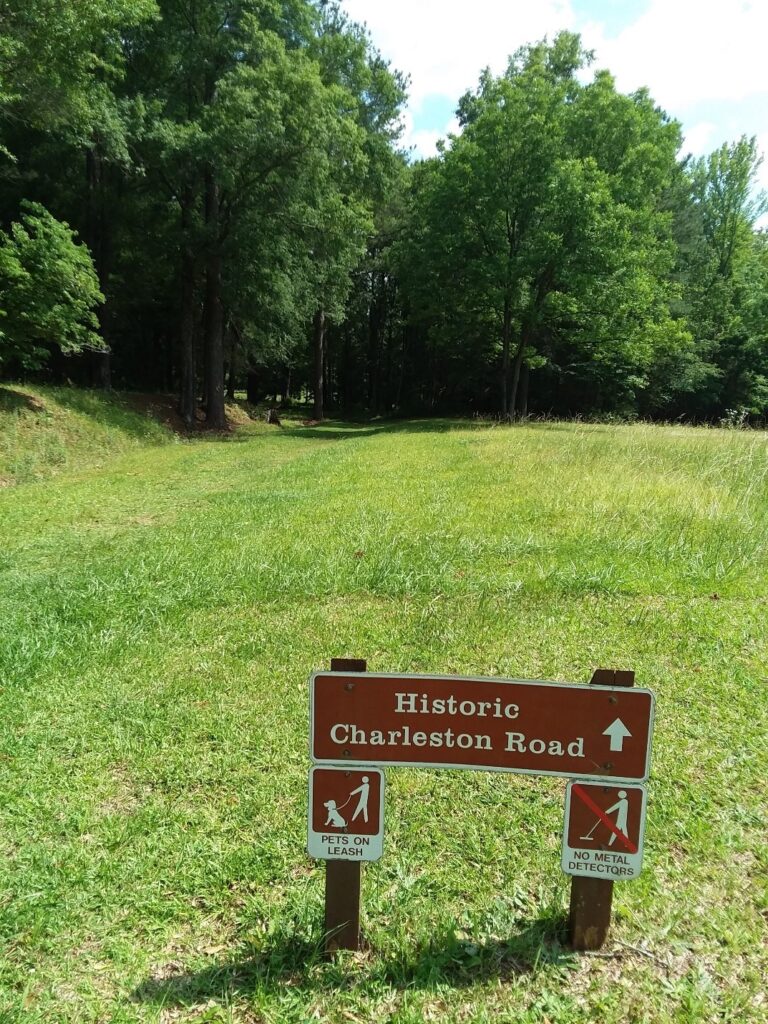
Several historic roads and waterways come together at Ninety Six, including the Cherokee Path, once a direct route for Native Americans, settlers, traders and trappers.
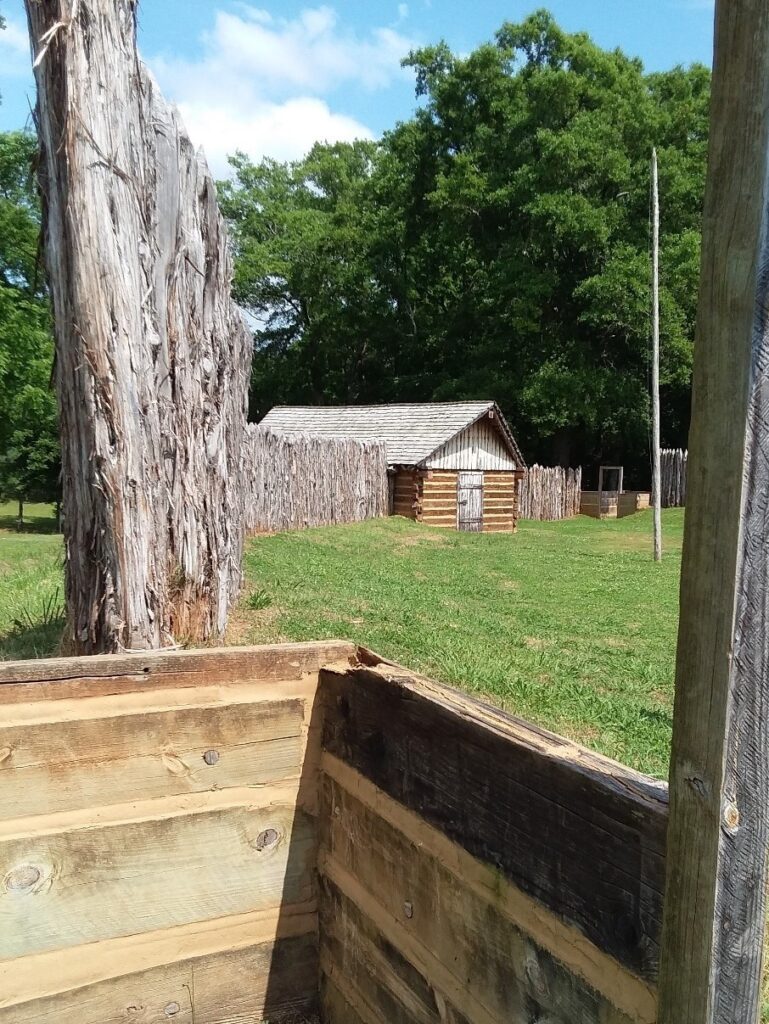
The reconstructed Stockade Fort to the north of Ninety Six where Lt. Colonel Henry “Lighthorse Harry” Lee managed to capture the Loyalist stronghold for the patriots during the siege. Another tie to the Washington, D.C., part of our trip: Lighthorse Harry was Robert E. Lee’s dad. Due to the failure to take the Star Fort, all patriots withdrew before British reinforcements could arrive.

The relocated Logan Log House (c. 1810) portrays a backcountry tavern.
We found a museum, movie and modest gift shop at the visitor center.
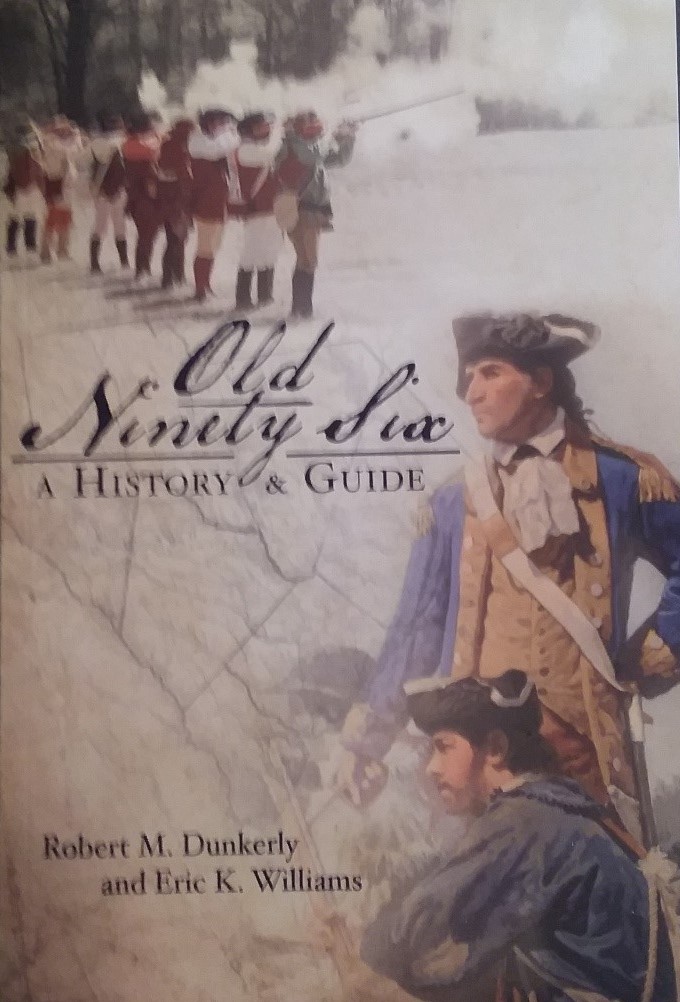
And I found another book. This history gave a more complete look at the battle. Some interesting facts:
To my surprise, the “British” manning the fort were Loyalists, including citizens of the town, and not a single British soldier was present. This was the norm in virtually all the battles in the South during the Revolutionary War. Only rarely was an actual British soldier engaged in battle. Even the Loyalist commander of the Star Fort, Colonel John Harris Cruger, born in Jamaica, came from a prominent New York family. The Cruger trading firm operated between Bristol, England, and the West Indies. Alexander Hamilton worked as a clerk at their firm between 1866 and 1868. The Revolutionary War in the South was much more a civil war than I ever understood.
Further, it was not uncommon for soldiers from one army to dessert and join the opposing army. For instance, if it seemed the patriot cause was hopeless, soldiers left to fight with the Loyalists.
Not long after the battle, Cruger and his men destroyed supplies and burned the town of Ninety Six, leaving nothing behind for the South Carolina backcountry Patriots who controlled the area despite Cherokee support for the British.
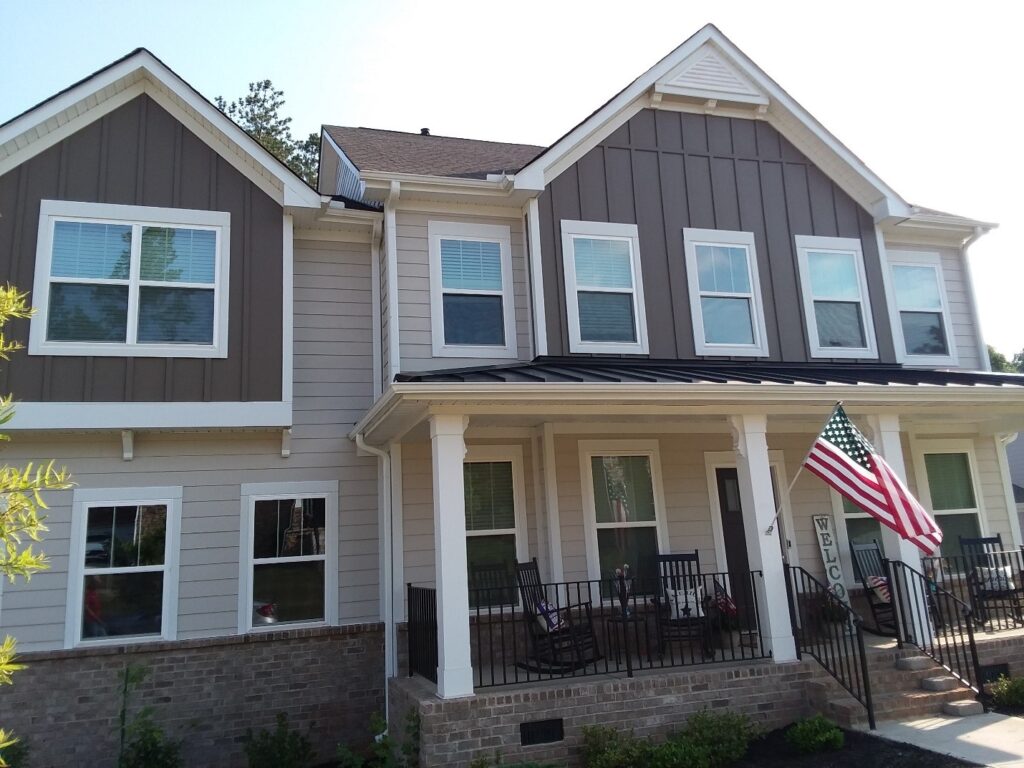
Then it was on to Wendy’s new, beautiful house for Italian food and a wild game of Hearts.
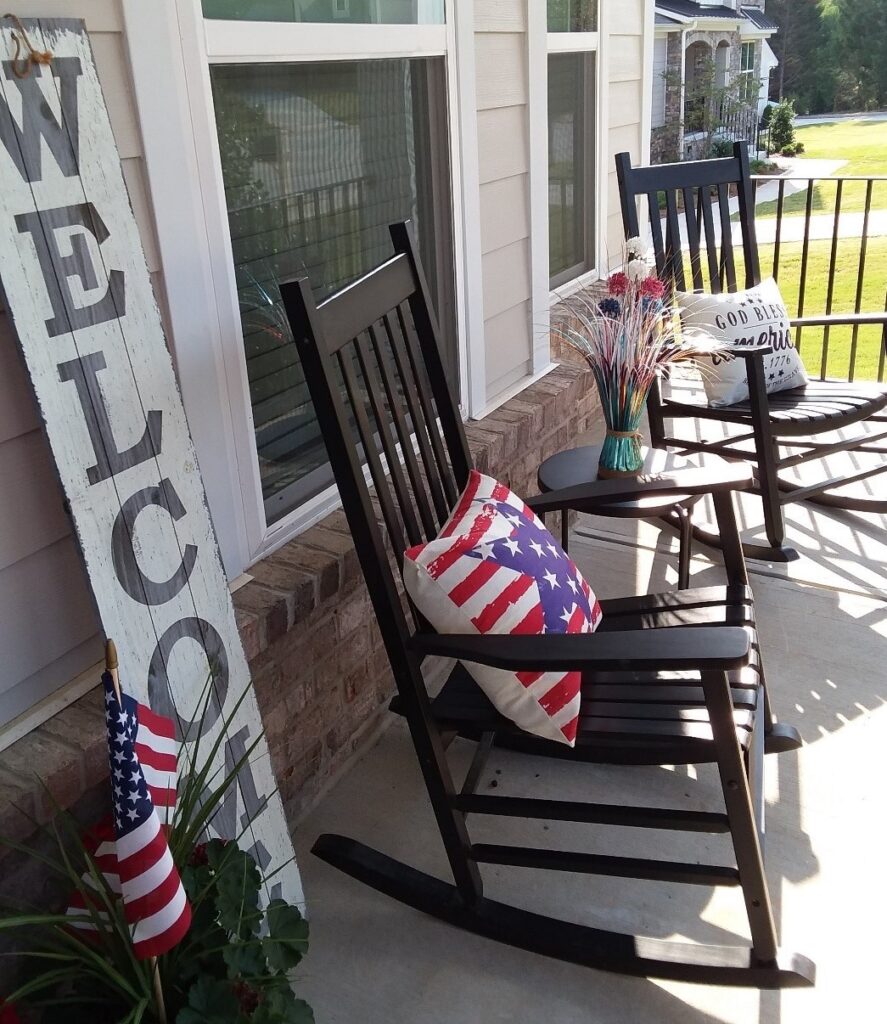
I love front porches and hers was decked out for July Fourth.
A tour of the neighborhood ended our day.
